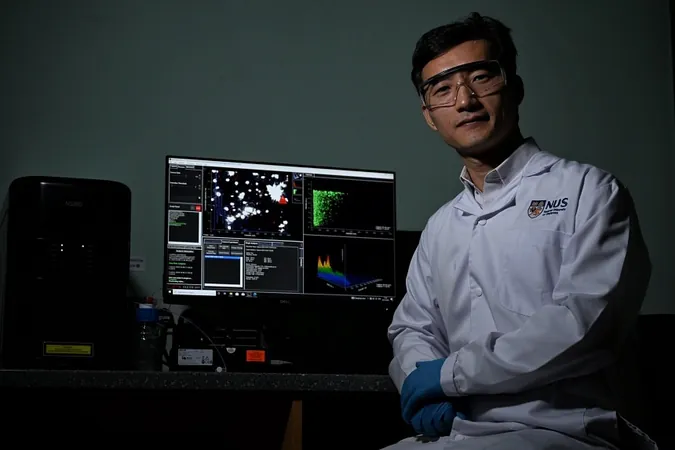
Revolutionary Nanoparticles Pave the Way for Safer, More Effective Cardiac Care!
2024-11-10
Author: Mei
Groundbreaking Research on Nanoparticles
A team of researchers from the NUS Yong Loo Lin School of Medicine (NUS Medicine) has made strides in developing innovative nanoparticles that not only diagnose the dangerous build-up of arterial plaque, a condition known as atherosclerosis, but also target and treat these plaques directly.
Functionality of the Nanoparticles
These cutting-edge nanoparticles function by breaking down in the acidic environment of atherosclerotic plaques, releasing gadolinium—a chemical that enhances imaging capabilities in magnetic resonance imaging (MRI). This allows healthcare providers to obtain real-time, high-resolution images of plaque severity.
Dual Benefits of Diagnostic and Therapeutic
The nanoparticles can simultaneously deliver simvastatin, an anti-inflammatory medication that plays a crucial role in stabilizing plaques and mitigating the risk of life-threatening cardiovascular events.
Safety and Removal of Nanoparticles
Assistant Professor Wang Jiong-Wei emphasized the safety of the nanoparticles, stating, "If a patient's condition improves, the nanoparticles will degrade or exit the body harmlessly within a few days."
Multidisciplinary Collaboration
The multidisciplinary research team collaborated closely with experts from NUS's College of Design and Engineering and Chemistry Department, further highlighting the innovative nature of this study.
Impact on Cardiovascular Diseases
Atherosclerosis remains a leading cause of cardiovascular diseases globally, responsible for a staggering 17 million deaths annually according to the World Health Organization.
Non-Invasive Imaging Alternatives
Unlike traditional imaging techniques that can be invasive and limited in resolution, the utilization of nanoparticles offers a non-invasive alternative.
Maximizing Therapeutic Effects
Moreover, particles can deliver up to a thousand times more simvastatin directly to the plaque compared to traditional oral methods, maximizing therapeutic effects while minimizing systemic side effects.
Future Transition to Clinical Trials
While still in the proof-of-concept phase, Professor Wang expressed hope for transitioning to clinical trials within three to five years.
Conclusion and Future of Cardiac Care
With this pioneering research, the future of cardiac care looks brighter than ever!


 Brasil (PT)
Brasil (PT)
 Canada (EN)
Canada (EN)
 Chile (ES)
Chile (ES)
 España (ES)
España (ES)
 France (FR)
France (FR)
 Hong Kong (EN)
Hong Kong (EN)
 Italia (IT)
Italia (IT)
 日本 (JA)
日本 (JA)
 Magyarország (HU)
Magyarország (HU)
 Norge (NO)
Norge (NO)
 Polska (PL)
Polska (PL)
 Schweiz (DE)
Schweiz (DE)
 Singapore (EN)
Singapore (EN)
 Sverige (SV)
Sverige (SV)
 Suomi (FI)
Suomi (FI)
 Türkiye (TR)
Türkiye (TR)